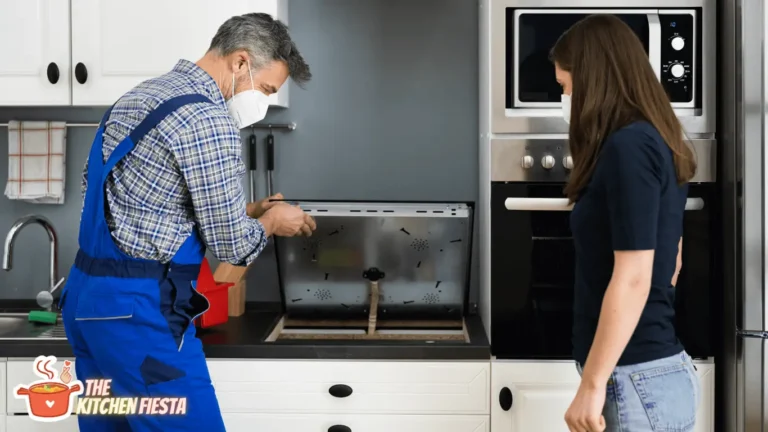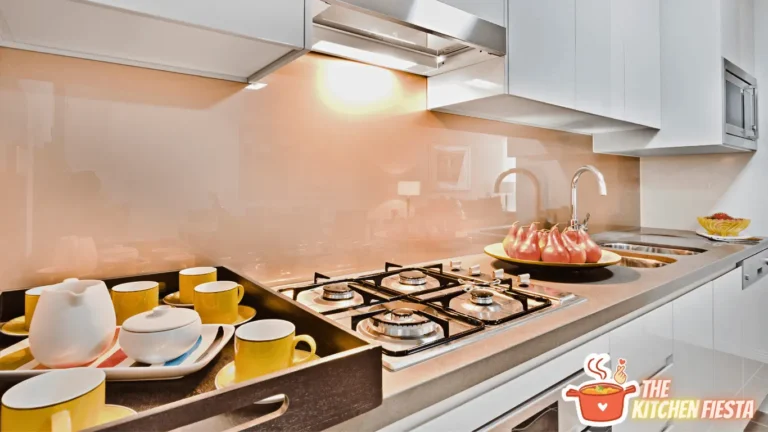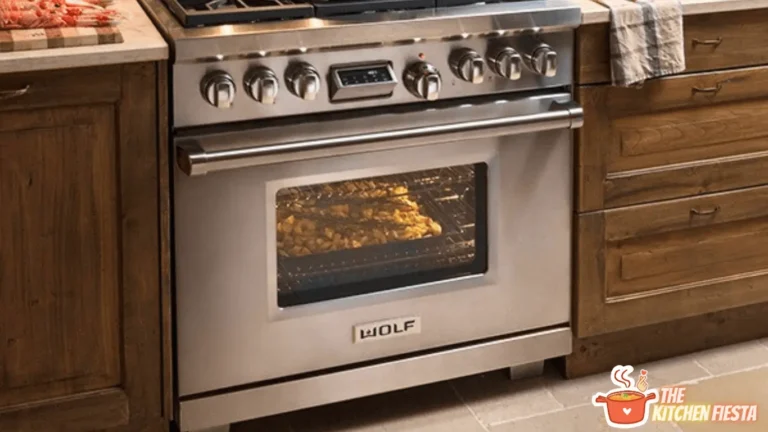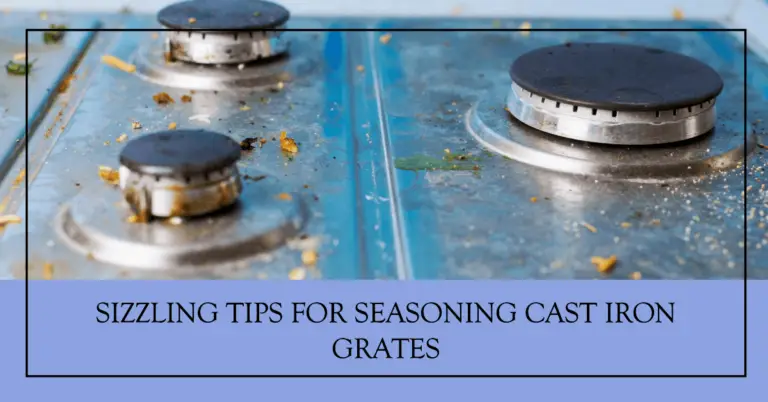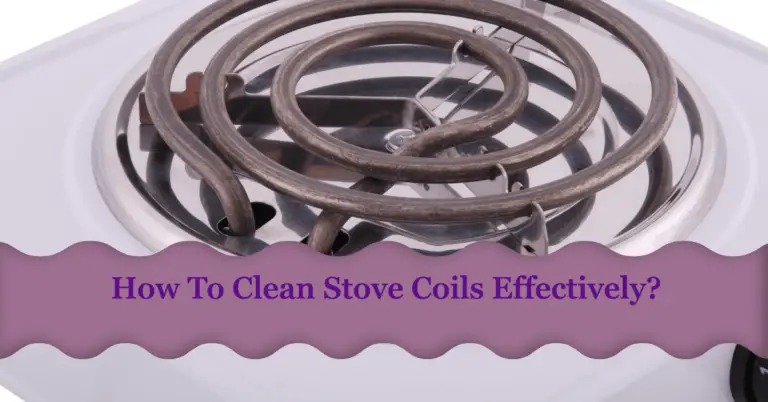What Causes Yellow Flames on a Gas Stove & How to Fix It
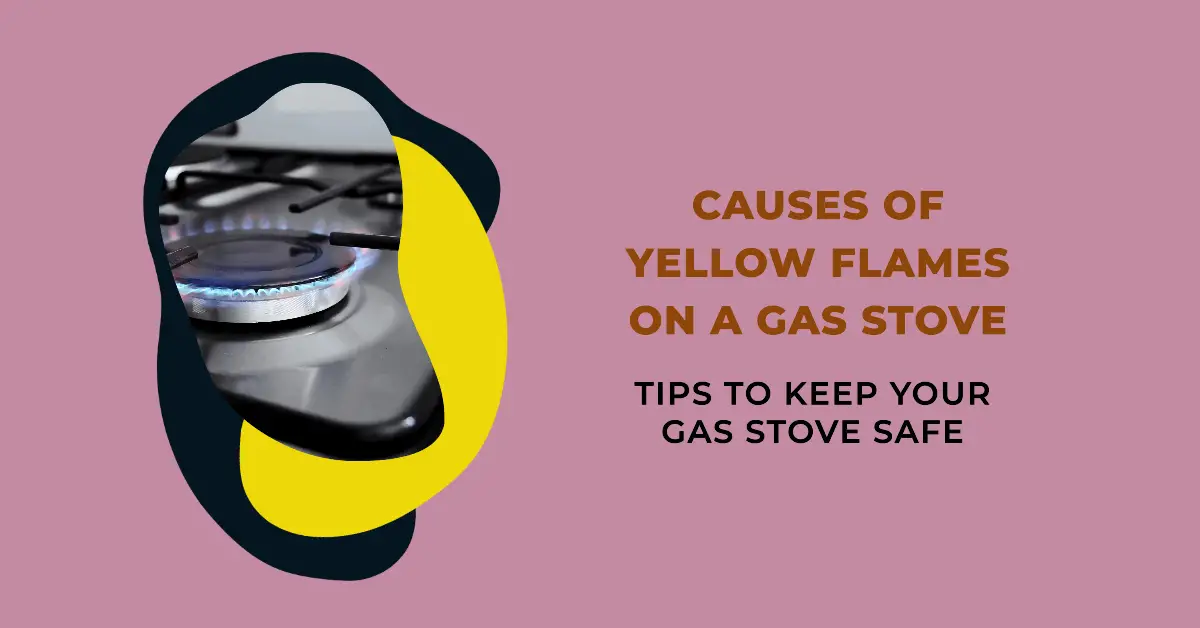
Seeing yellow or orange flames coming from your gas stove burners instead of the normal blue ones can be unsettling. But what causes this improper gas combustion, and how can you adjust your stove back to efficient burning?
Yellow gas flames typically indicate that the air-fuel mixture is off and combustion is incomplete. This results from restricted air supply, clogged burner ports, moisture buildup, or other issues preventing the gas from igniting cleanly with sufficient oxygen.
Fortunately, in most cases you can troubleshoot the specific cause of yellow flames on your stove and fix it with some simple adjustments to the burners. Understanding what makes the flames turn yellow along with proper maintenance can help resolve combustion problems.
What Causes Yellow Flames on a Gas Stove?
Clean blue flames are the result of gas combusting efficiently with plenty of oxygen. So when you see yellow flames, it means something is interfering with that ideal process.
The most common causes of yellow gas flames include:
1. Insufficient Air Flow to the Burners
The primary reason your gas flames turn yellow is because of insufficient air supply. For clean combustion, gas needs the right amount of air mixing with it as it ignites. Restricted airflow upsets this balance.
On a gas stove, each burner has tiny ports that allow both gas and air to flow up and combine. Proper ratios of gas and oxygen result in hot blue flames as the fuel combusts fully.
But any blockages or clogs in the burner ports, gaps or air holes can limit airflow into the gas stream. This oxygen deficiency creates incomplete combustion and yellow lazy flames.
Over time, food, oil, grease and other debris can build up on or around the small openings on a stove burner, inhibiting the amount of air getting through. Mineral deposits from water can also clog these vital holes.
On some stove models, there is also an adjustable air shutter, collar or airflow valve that optimizes combustion. If these vents are closed too far or get stuck, it also cuts off the burner’s air supply.
Finally, the supply lines, valves and gas regulator delivering fuel to the stove can suffer issues that affect the air-gas mixture. A worn out gas regulator may not be providing steady pressure for clean burning.
2. Dirty or Greasy Burners
Similar to clogged ports, grease-coated burners also end up disrupting the oxygen needed for proper flames. Burner caps in particular can become covered in baked-on food, oil and grime.
Over time these food spills, grease and other sticky debris clog up the burner openings and air gaps. This impacts the air-fuel ratios, resulting in inefficient yellow combustion flames.
The build-up prevents enough oxygen from properly mixing and feeding the gas flames. Without sufficient air, you end up with yellow lazy flames instead of crisp blue ones.
3. Moisture Buildup on the Burners
Another potential culprit behind yellow flames is wet burners. Small amounts of liquid on the stovetop can be a fire hazard, but moisture can also cause combustion issues.
If the burner ports, gaps or caps have any water droplets or condensation on them, it affects the gas ignition. The moisture alters the air-gas mixture so that the fuel can’t burn cleanly.
Wet burners are most often caused by spills and splatters from cooking not being cleaned up. In humid environments, condensation can also form on the stovetop and get drawn into the burners.
This moisture combines with the gas and reduces the amount of oxygen available for combustion. The end result is yellow flames from the incomplete burning.
4. Old or Malfunctioning Gas Stove Regulator
Some older gas stoves rely on outdated regulators that are no longer functioning optimally. The regulator controls and stabilizes the gas pressure from the supply lines.
If this gas regulator component is too old, sticky or inaccurate, it can send too much or too little gas through to the burners. Either situation throws off the careful air-fuel balance needed for clean flames.
You may notice yellow flames predominantly on high settings, as an old regulator struggles to properly handle the higher gas volume on full blast. Lower settings may continue burning normally where less fuel is involved.
While rare, a malfunctioning gas regulator valve can also damage the critical tip-top shape of the flame needed for completeness combustion.
5. Using the Wrong Size Burner
Another more straightforward issue can be something as simple as using a burner too small or too large for the pot or pan.
The flames need to be fully centered and below the cookware to burn efficiently. If pots and pans are positioned over burners of the wrong size, it can impact the shape and combustion of the flames.
For example, a 6-inch pan on a large 8-inch burner may result in uneven yellow flames as gases escape around the sides. The opposite problem of large cookware on a burner too small can also hinder efficiency.
Why Yellow Gas Flames Are Hazardous?
Seeing yellow or orange tongues of flame occasionally may seem harmless. But prolonged yellow flames are actually dangerous and unhealthy. There are a few key risks:
1. Increased Carbon Monoxide
The incomplete combustion from yellow gas flames produces higher levels of carbon monoxide as a byproduct. Carbon monoxide is a colorless, poisonous gas.
When inhaled, CO bonds to the hemoglobin in blood cells more easily than oxygen, gradually starving the heart, brain and other organs of oxygen. It causes flu-like carbon monoxide poisoning symptoms and can be fatal at high concentrations.
Properly adjusted blue flames only produce traces of CO that are vented out. But yellow flames mean CO concentrations near the stove may rise to hazardous levels as the gas does not burn fully.
2. Greater Risk of Fires
Lazy yellow flames also increase the chances of stove fires in the kitchen. Yellow flames contain more unburned fuel since combustion is not complete.
This excess raw gas concentrated around the burners is more volatile and easily ignited should a spill, grease flare-up or other accident occur. The uncontrolled yellow flames can more easily spread to surrounding areas.
Blue flames contain far less stray gases, making the stove safer. Stronger less turbulent blue flames also helps protect against accidental fires.
3. Damage to Stove Equipment
The final danger with yellow flames is that the excess gases and higher temperatures subject the stove burners to damage over time.
The loose yellow flames bathe the burner caps, grates and stove interior in more concentrated heat than with a blue flame. This puts added stress on metal components.
The excess fuel can also deposit more carbon soot and corrosion on equipment. Together this slowly degrades stove parts, shortening the lifespan.
How to Adjust a Gas Stove’s Flames from Yellow Back to Normal Blue?
If your gas stove is producing yellow flames, the good news is there are typically some easy fixes:
Thoroughly Clean the Burners and Stove
The first step in troubleshooting yellow flames is giving the burners and stove a thorough cleaning. Removing built-up gunk around the ports can immediately improve combustion.
Make sure to scrub off any food debris, grease splatters, oil, minerals and other deposits clogging the tiny burner openings. Use warm soapy water, baking soda, and a toothbrush for stuck-on grime.
Take off the burner caps and grates to access the ports underneath. Carefully clear any lint or debris around the ignition electrode and thermocouple too.
Avoid poking anything into the actual ports which risks further blockage. Finish by wiping down the stovetop, caps, and grates so no moisture or residue remains.
With all the vital gas and air openings cleared, oxygen can once again properly mix with the fuel for ideal flames.
Inspect and Unclog All Gas Ports and Air Gaps
Next, closely inspect each burner to ensure all of the tiny gas ports and air openings are completely unblocked. Clogs in even a few ports can hinder airflow.
Hold the burner parts up to a bright light and use a magnifying glass if needed to carefully check every hole. If you spot any dark or obstructed ports, use a straightened paper clip, sewing needle or compressed air to gently clear them out.
Also confirm the air gaps around the base of the burner and ports are all free of debris. Any gaps along the burner caps should likewise have no obstructions. Everything needs to be open for air intake.
Unclogging all ports and air paths restores the right mix of oxygen and gas to the flames for full combustion.
Adjust the Air Collar, Shutter or Flow Valve
Some gas stove burners include an adjustable air shutter, collar, venturi, or airflow valve that optimizes the oxygen supply.
Check if your burners have this vent and make sure it can open fully. Carefully pry it looser with a flathead screwdriver if stuck. Opening the vent wider allows more air back into the gas flow.
On models with capsule burners, adjusting the air collar ring around the base will also permit more airflow up through the ports. Expanding these vents counteracts limited oxygen.
Manually increasing air intake to the burners through these mechanisms can instantly improve yellow flames. Take care however not to open airways too far or flames may lift off burners.
Have a Technician Inspect and Adjust the Gas Regulator
For older stoves with outdated or failing regulators, have a professional technician inspect and adjust the gas pressure controls.
They can measure if fuel is getting delivered within safe parameters across all settings. They can then tweak or replace obsolete regulators so the proper gas volumes reach your burners for each flame setting.
An expert can also detect more subtle alignment or ignition issues causing inefficient flames and reset your stove for optimal burning.
Ensure Cookware Matches Burner Size
Double check that your pots and pans are the appropriate dimensions for the stove burner being used. Flames should be fully contained under the cookware bottom.
Oversized burners allow gases to escape around small pans. Too small burners do not allow large pots full contact with the flames. Either can result in uneven yellow flare-ups.
Change to properly sized cookware or burners matched to each other. Center your pans so flames are completely but not overly covered. The flames should burn strong and blue.
Have Gas Lines Inspected by a Professional
In rare cases, leaks or flow issues in the gas supply pipes, valves or connections could affect stove combustion. Yellow flames may signal a problem upstream.
Professionals have the tools to check for any leaks in fittings and pressure drops along the gas lines. They can detect if burner issues stem from upstream delivery.
They can then remedy leaks, kinks, or corrosion responsible for restricting flow to the stove. Always leave gas line repairs to qualified experts.
Preventing Yellow Gas Flames
To help avoid yellow flame issues recurring, keep your stove in top shape with regular care:
- Wipe up spills promptly to prevent grease buildup
- Boil water on burners occasionally to loosen debris
- Remove and wash burner caps and grates regularly
- Check ports and vents for any blockages
- Keep the stovetop dry and moisture-free
- Use manufacturer recommended stove cleaners
- Ensure pots and pans match burner size
With attention and preventive cleaning, your gas stove should continue burning safely with clean blue flames. But at the first sign of yellow, address the potential causes before a fire hazard or carbon monoxide issue arises.
When to Call a Professional for Yellow Flames?
DIY troubleshooting can resolve many yellow flame problems. But if the below situations apply, do not hesitate to call for a technician:
- Burner issues persist after all cleaning and adjustments
- Heavy grease or soil requires complete burner disassembly
- You smell gas before or after the stove is lit
- Flames are sputtering, sparking or extinguishing
- The stove emits fumes or makes popping noises
- There are signs of equipment overheating or damage
- You lack experience with gas systems
Gas work should be handled by qualified professionals. They have the tools and expertise to inspect lines and valves, test components, and fix or replace defective parts you cannot access.
Conclusion
Yellow, orange or lazy blue flames on your gas stove indicate combustion issues that should be promptly addressed. In most cases, insufficient air, clogged ports, moisture or regulator problems are the cause.
Identifying and remedying these issues through cleaning, adjustments or professional repairs can restore proper blue flames. Your stove will once again be safe and operating at peak efficiency.

